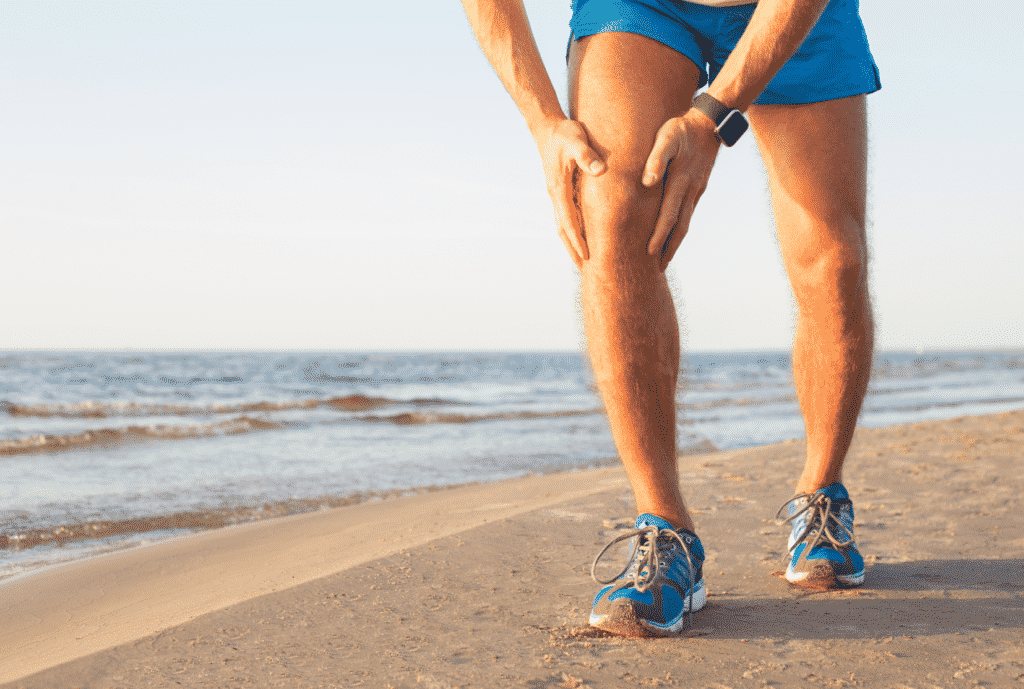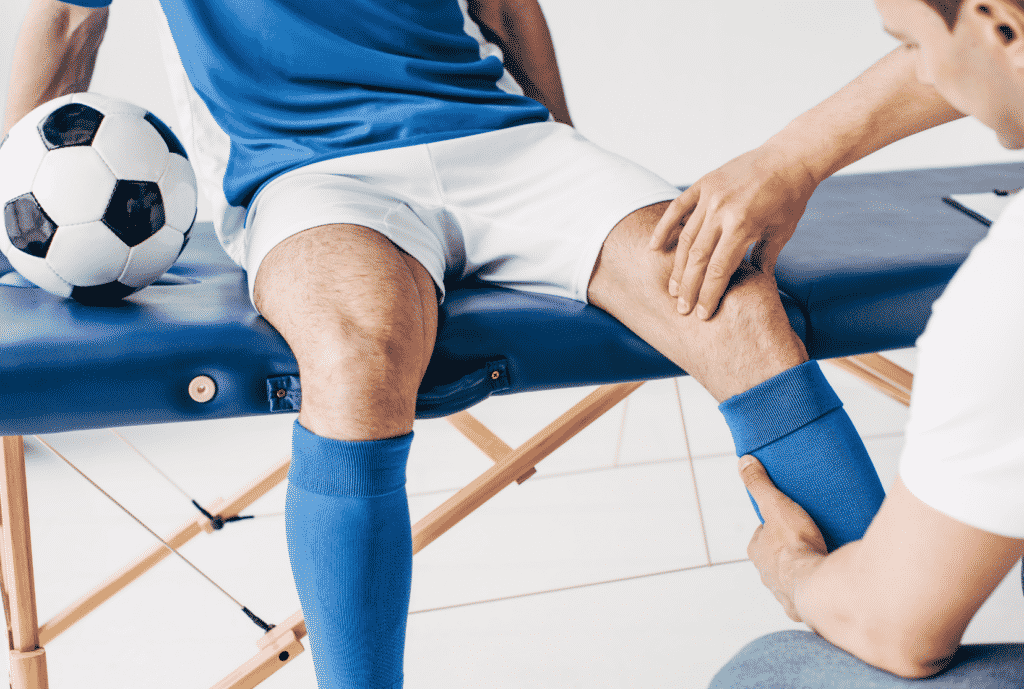The patella is also known as the kneecap. It has a significant role in the body, including protecting the patellar tendon and acting as an extension to help control knee flexion. The patella is essential for high-speed running and jumping activities since it helps protect the patellar tendon from overloading.
Each patella has two articulations, which are called patellar surfaces. One is the superior patellar surface, and the other one is the inferior patellar surface. The patella can move easily due to these articulations. Ligaments help prevent patella dislocation so that they won't move out of place, especially patellar ligaments.
A patellofemoral pain syndrome known as patellar tracking disorder can result in knee pain. The patella can't track smoothly because it slides off or doesn't slide properly on the patellar surfaces. This is what leads to knee pain; this is why this must be given attention.
What Is Patellar Tracking Disorder?
It is the patella not moving smoothly on patellar surfaces when you are walking or running. This can happen when it moves to the side, up, down or backward. Since the patella is one of the weight-bearing parts in our body, this can be very painful and can be a major factor in patella movement.
The medial patellofemoral ligament and patellar tendon must endure the greatest amount of pressure. Weak patellar muscle and the tight iliotibial band can cause patellar tracking disorder, too. When the patella doesn't move smoothly, it also means that you are at risk of patella subluxation or patellar dislocation, which can cause serious knee problems.
What Are The Symptoms Of Patellar Tracking Disorder?

There are some symptoms that it can cause. The first one is having patellar pain, especially after performing activities that involve patellar movement like walking and running. It can also lead to knee joint inflammation, which often leads to patellofemoral pain syndrome (PFPS).
PFPS usually occurs after a patellar injury, patella instability, and patellar subluxation. If patella movement is painful despite rest, this can be the reason behind it, or you may have patellofemoral pain syndrome.
You need to seek treatment right away because this can lead to serious complications like arthritis in the knee. Arthritis in the knee is very painful, making arthritis in the knee much more likely to happen.
What Are The Causes of Patellar Tracking Disorder?
When the patella doesn't glide smoothly, patellar tracking disorder can result. Many things cause this, such as muscle imbalances and injury.
Overusing the knee is one of the main causes of this disorder. However, it is the result of several issues acting together. These might include:
- One is patellofemoral pain syndrome, which occurs in the front of the knee; this is caused by the patella being forced to the side.
- Another cause happens when patellofemoral syndrome doesn't work, which can happen if the patella position is off during movement or pain in the front of the knee joint. Tight iliotibial band and patellar muscle imbalance are causes, too. The iliotibial band is a thick band of connective tissue that starts at the hip, and patella tracking disorder can result if it's tight. This causes the patella to ride up or down on patellar surfaces when you walk, and patellofemoral pain syndrome can result.
- Another cause is patellar muscle imbalance where the patella moves to the side too much. Weak patellar muscles will allow the patella to move out of place or shift, which causes patellofemoral pain syndrome and patellofemoral syndrome.
How Patellar Tracking Disorder Affects You?

It has numerous effects on your lifestyle because its symptoms can worsen, leading to other complications if left untreated. The first one is patellofemoral pain syndrome in which the patella moves to the side too much, and it's very painful and can result if the patella moves backward or down excessively.
Anterior knee pain is another symptom that you will experience, and this results in the patella moving to the side too much.
It can also result if the patella moves forward or up too much. Anterior knee pain is very painful and can occur when patellar movement causes pain in the front of the knee.
It can also cause patella subluxation or dislocation, caused by the kneecap slipping out of place or shifting.
Patellofemoral pain syndrome usually happens after an injury but also after performing activities involving patellar movement like walking and running. It can also lead to knee joint inflammation, which often leads to patellofemoral pain syndrome (PFPS).
Who Is At Risk Of Having Patellar Tracking Disorder?
If you have PFPS or patellofemoral syndrome, you may also have this if your knees are always painful and cause pain, especially when doing exercises involving the knee's movement.
This is common among young people who engage in high-impact activities like long-distance running or playing sports involving running. Also, this is common in pregnant women, especially those who are in the later trimester and those who have a family history of this condition.
Symptoms and causes of this knee injury vary from person to person, so you must talk with your doctor if you suspect that you are affected by this.
When To Ask Professional Help?
You can't help it if you are not a doctor. If your PD symptoms are severe, you should seek medical attention right away. You can also see a chiropractor if you have this knee injury and the pain has lasted for more than two weeks or so even after doing rest and recovery exercises.
There is no cure for this disorder, and recovery time varies from person to person. But you can help recovery by doing exercises, stretches, patellar strengthening exercises, and patella tendon massage which we teach at our clinic, DeBole Chiropractic Victor, NY.
How Can Chiropractic Help?

I’m Dr. Mike DeBole of DeBole Chiropractic in Victor, NY., and our clinic provides patellar alignment, which can help the patella track properly and keep your knees pain-free. When the patella doesn't track properly, patellofemoral pain syndrome can result, which paves the way for PTD.
I am trained to help patient recovery by doing taping, providing timing, mobilization, and fracture treatment. If you're looking for a patella brace, patellar knee sleeves, or patellar compression bands, your chiropractic may provide a kit if you don't have any insurance.
Chiropractors at DeBole Chiropractic Victory, NY., provide patellar tracking treatment with patella traction and patellofemoral pain syndrome treatment that can help get rid of this disorder. Even patellofemoral syndrome treatment can help tendons, tendonitis, and fractures heal faster when you get a patella brace.
Conclusion:
If you want to gain your life back from knee problems, it's time for you to contact us at DeBole Chiropractic in Victor, NY. We are happy to help patients achieve pain relief and function better through chiropractic care.
Don't suffer from knee pain that prevents you from doing what you love - schedule an appointment with us today!

